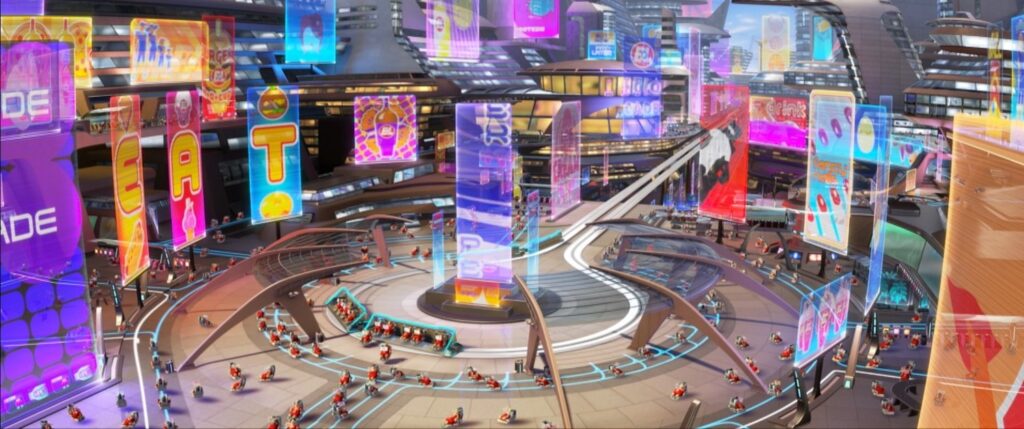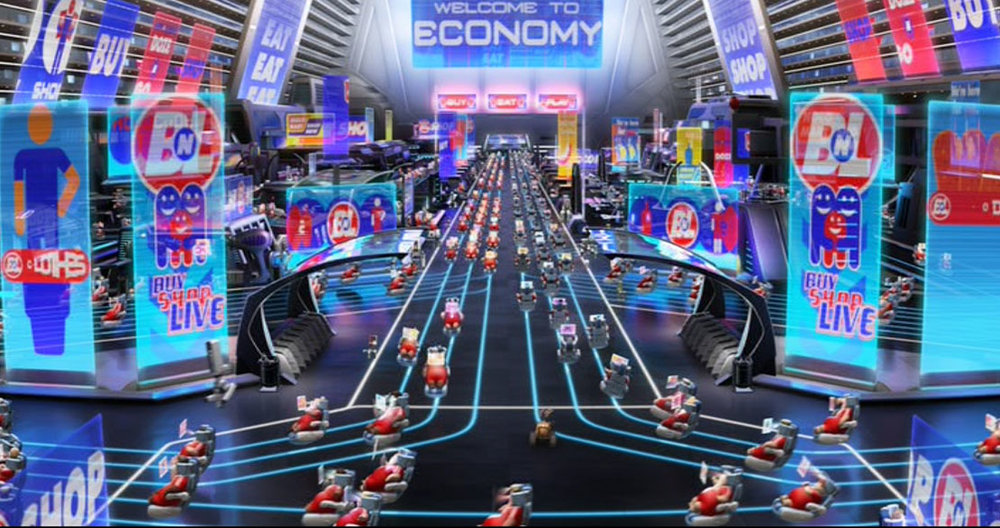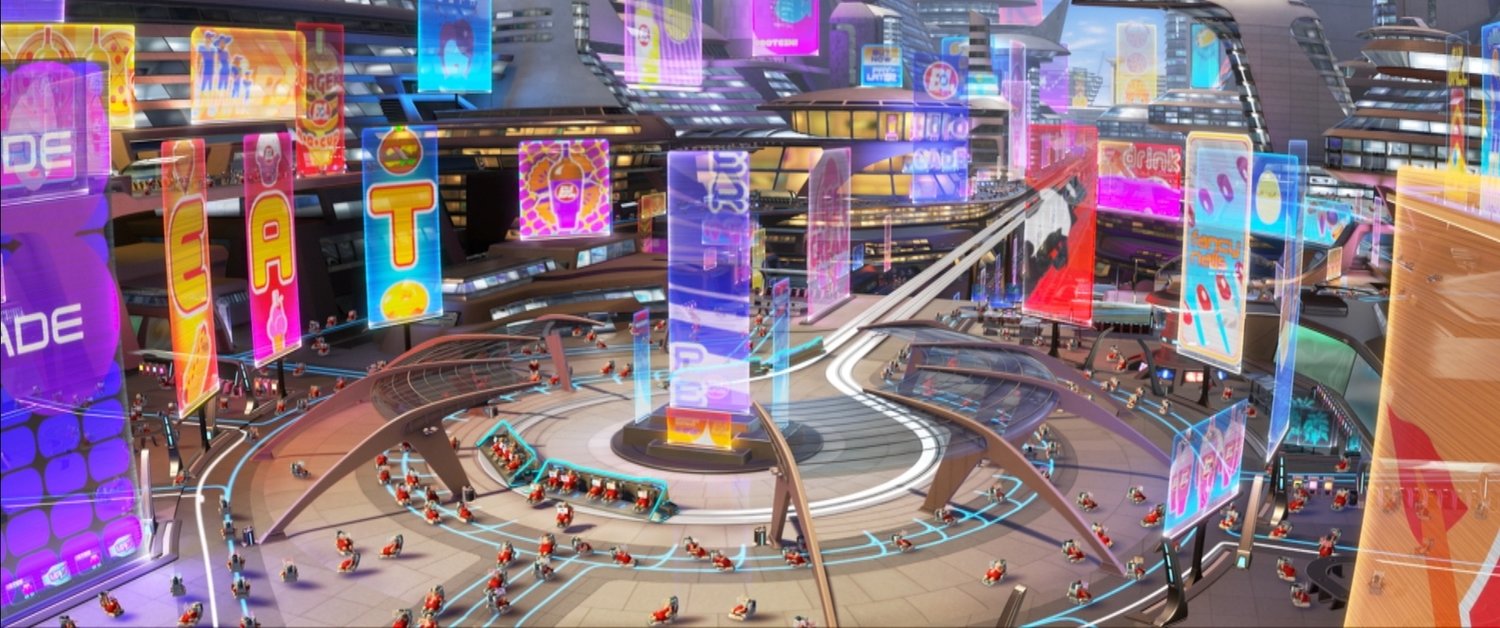
Buy N Large. Credit Disney / Pixar.
I was struck again this morning by the volume and tenor of mainstream news covering retail and ecommerce.
Stories regarding the rise of Amazon and the end of retail are nothing new. What is striking about the latest stories is the ever faster pace at which the change is occuring; the massive, global scale of recent investments; and the positive feedback loop that is accelerating as companies innovate and consumers respond with ever greater dollars and expectations.
More retail industry companies will implode and explode in the next few years than in the last twenty five.
What are the implications for modern society when all of our needs are met through doorstep delivery?
As a free market champion, optimist and entrepreneur, I love the prospect of these new models taking hold and want to continue my work to build this future into existence. As a dad and realist, I see the impact of always-on devices on my kids’ lifestyle, and can see a future more class-divided than we might imagine reflecting the different realities of end customers and service providers. Don’t get me started — at least not in this post — on the impact of machine learning-enabled robots steadily taking on the literal heavy lifting of our global logistics backbone.
The innovator’s dilemma is more real than ever for traditional brands and retailers laden with a fat real estate overhang, poor inventory planning, and stone-age ideas about what consumers want and how they shop.
The opportunity for world-changing brands is huge. The opportunity is even greater for the hardware, software, data, and intelligence providers that enable them.
Here are four stories that dropped within the last 24 hours. This is all gated content, you’re warned in advance.
Quotes are direct, curated for hyperbole:
Amazon Didn’t Cripple Bed Bath & Beyond. Its Own Leaders Did.
‘We’re not in a rush to make mistakes’: The same mind-set that banned Post-it notes also left the retailer slow to adapt to e-commerce
Its leaders built a superstore for housewares, with more than 1,500 locations that had so much merchandise that products hung from the ceiling. But they were ill-equipped, former employees say, to transition to a world where consumers can access thousands of items by tapping a smartphone screen.
The Mall Meltdown Continues
Mall-based retailers reported dismal earnings last week, reminding investors of the sector’s fundamental problems
While retailers posted generally strong numbers in 2018, raising hopes of a retail renaissance, this year has seen a reversion to the pre-2018 trend: department stores and mall-based retailers giving up share to discount stores and e-commerce.
Blackstone Bets $18.7 Billion on Amazon Effect in Warehouse Deal
Purchase will nearly double Blackstone’s industrial footprint
“Making the shopper journey easy, with transparency into order and delivery status is critical to success,” she said. “Companies that build engaging experiences for their customers will be rewarded with loyalty and increased spending.”
In Amazon vs. Walmart Delivery Battle, a Fresh Salvo
E-commerce company says more than 10 million products can now be shipped next day for Prime members
The e-commerce giant is touting the arbitrary milestone about three weeks after Walmart announced it would begin offering free next-day delivery shipping on about 200,000 products for shoppers on some orders in a handful of cities. The two rivals have been one-upping each other with announcements of faster shipping options as they seek to cater to ever-demanding online shoppers.


